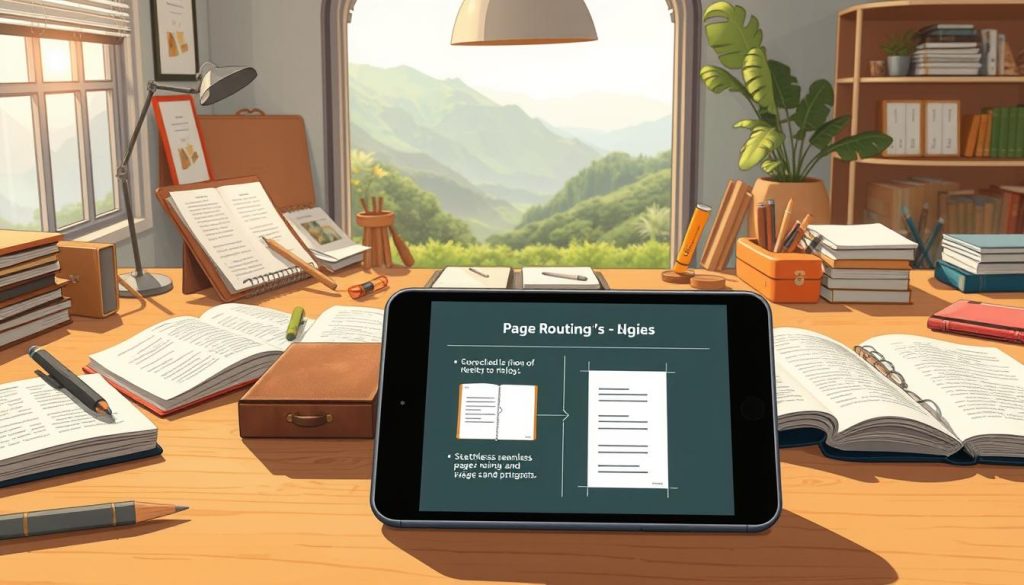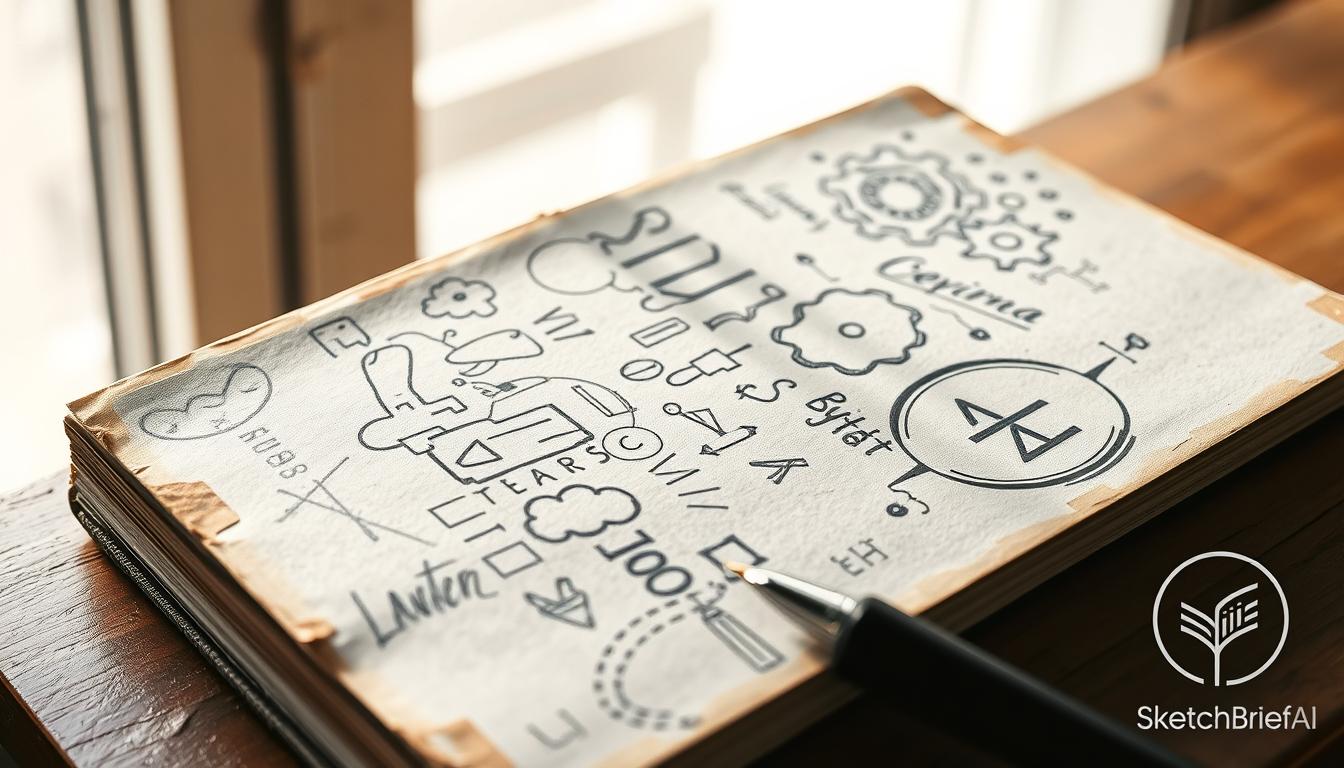Can a simple paper page calm a crowded calendar? We ask this because many of us tried running everything in Roam Research, Obsidian, or Evernote and felt something was missing.
We found that a morning paper brain dump—then a focused review in ClickUp and the calendar—makes the rest of the day more predictable.
Proven practices like deliberate indexing and separating literature from permanent notes (inspired by Sönke Ahrens and Niklas Luhmann) helped us move lessons back into Obsidian with better structure.
In this guide we show a clear system: capture fast on paper, keep what matters, and publish outcomes to the right tools—Trello, Notion, Google Docs, or your task manager—so you save time and avoid duplication.
Key Takeaways
- Start the day with a brief paper journal to clear your mind and surface ideas.
- Move commitments into ClickUp or your calendar—only what matters crosses into apps.
- Use deliberate indexing to make retrieval fast and reliable.
- Match each detail to a single tool to avoid duplication and friction.
- This method protects privacy while keeping team deliverables clear.
- By the end, you’ll have a calm, repeatable routine you can adopt immediately.
Why Analog Still Matters in a Digital-First Workday
Handwriting gives us a quiet edge: it slows thinking just enough to make ideas clearer.
The cognitive benefit of pen and paper is real. Readers who adopt a Zettelkasten report that handling index cards forces deliberate thinking and improves recall. The Antinet approach reinforces this by showing how hands-on indexing reveals structure that search can hide.
The cognitive edge of handwriting for focus and recall
Writing by hand reduces context switching. You let your brain process concepts as you listen and then summarize in your own words.
That tactile trace—pen on page—creates a memory cue that helps you remember decisions and follow-ups over the next days.
When apps distract: keeping things simple with pen and paper
Keeping a single sheet limits inputs on your desk and screen. This simple way cuts distractions and keeps attention on people, not interfaces.
- Paper forces selectivity: you capture essentials, which saves time when you transfer highlights into ClickUp, Roam, Notion, or Google Docs.
- Pairs with your tools: a lightweight system sends only final owners and due dates into shared apps.
- Improves work life: fewer tabs, calmer focus, and clearer follow-ups across days.
In short: use paper to think deeply, then move outcomes into the apps that power execution. This preserves clarity, saves time, and protects focus.
From Page to Platform: A How-To for analog meeting notes digital workflow
Turn a single page into the hub that feeds your apps and keeps action moving. Start each page with a simple template: agenda at the top, running notes on the left, decisions and owners on the right, and a short list of open questions at the bottom.

Capture live: structured pages for agenda, decisions, tasks, and questions
Write by hand, circle decisions, star tasks, and box questions so items stand out. This visual shorthand makes transfer fast and reduces errors when you type or photograph the page.
Tag at the source: lightweight indexing so notes don’t get lost
Add a meeting ID (for example, 2025-09-13-ClientA-Q3), a project code, and two keywords. This Antinet-style index step makes search simple and links paper to app records.
Digitize quickly: photos, scans, and voice-to-text without breaking flow
Right after the session, take a phone photo for backup. If helpful, run a scanner app or record a 30–60 second voice summary to capture context without retyping.
Route to the right place: tasks, documents, and calendar events
Route work where it belongs: tasks with owners and due dates go to ClickUp, Trello, or Asana; final decisions and context go to Google Docs or Notion; exploratory ideas live in Roam or Obsidian.
- Use matching titles across paper and app so search returns exact hits.
- Reserve five minutes to transfer action items—time-boxing prevents a long administrative tail.
- For sensitive tasks, keep minimal fields in the app and store detailed context in your private notebook.
Design an Analog System That Feeds Your Digital Tools
Design a simple paper system that funnels the best items into your apps without extra typing.
Start each page with a compact journal spread: header with date and meeting ID, left column for rapid logging, right column for owners and due dates.
Bullet journal basics for meetings
Use rapid logging symbols—dot for tasks, dash for notes, star for priority, arrow for migration. These marks make transfer fast and reduce clutter.
Migrate only essentials. Rewriting a task by hand forces you to decide if it truly deserves time in your app.
Literature vs. permanent notes
Treat literature as staging: capture quotes, references, and context from pre-reads. Then write one or two permanent notes that distill your thinking.
Permanent notes are short, self-contained, and reusable across projects. They form the durable part of your system.
Indexing that works in real life
Dedicate the first pages of your notebook as an index, or keep a single index card with meeting IDs and page numbers.
For heavy research, file topic cards with cross-references back to notebook pages and related documents. Consistent pen markings for decisions speed search and transfer.
| Capture Type | Purpose | Where it Lands |
|---|---|---|
| Literature | Staging: quotes and refs | Notebook / reference folder |
| Permanent | Distilled ideas for reuse | Obsidian / long-term notes |
| Index Cards | Fast lookup and cross-ref | Card file / notebook index |
Build a Hybrid Routine You Can Stick To
Start your morning with a quick paper unload, then check the calendar and your primary task tool to set a clear course for the day.

Morning setup
Begin with a two-minute paper brain dump to clear your head. Open your main tools and the calendar to align commitments for the day.
Write your top three tasks on paper so focus stays tight; keep remaining tasks in your app so execution stays coordinated.
End-of-day processing
After your last session, spend five minutes transferring assigned items and filing the page by meeting ID. Update your task manager so nothing lingers and you save time tomorrow.
Batch transfers at set moments to protect deep work and reduce context switching.
Weekly review ritual
Flip through photos and pages, list wins, and extract two or three insights. Prune old tasks from your tools to keep things simple and prevent overcommitment.
Try a small, pleasurable ritual—print two tiny photos and paste them in your journal—to make the rhythm stick.
Calendar as source of truth
Link each note to a date or project so you can reconstruct context quickly. When calendar entries and notes align, execution and life feel more manageable across busy days.
Tools and Workflows That Keep Things Simple
When we pair a reliable notebook with the right apps, transfer becomes a five-minute step, not a full chore.
Pen-and-paper setups — choose a durable notebook for sessions and a small stack of index cards for cross-references. Use a single page template and number pages or add tabs. This keeps paper organized and easy to archive.
Where things belong
Assign clear roles so your tools like ClickUp, Trello, and Asana handle project tasks and timelines. Put decisions and context in Notion or Google Docs. Park early thinking in Roam or Obsidian. This makes each app a focused execution or research space.
Search and retrieval
Standardize a meeting ID (YYYY-MM-DD-Client-Topic) on page headers, task titles, and doc names. Snap a quick picture of the page, upload it to the related task, and add a one-line summary.
| Item | Analog role | App role |
|---|---|---|
| Rapid capture | Notebook / index card | Photo + one-line summary |
| Tasks | Marked on page | ClickUp / Trello / Asana |
| Decisions & context | Page or card | Notion / Google Docs |
Keep tags lean — two or three per item. Save a smart search that filters by meeting ID, owner, and due date to cut time hunting and keep projects moving.
Conclusion
Close your day by moving one clear action from page to app—this tiny habit changes how your projects move forward.
We built a simple system that respects how your brain tracks ideas on paper and how teams execute with tools. Use a short end-of-day process: move essentials, snap a picture, and update owners and dates.
Keep it simple: one repeatable way to structure journal pages, a brief transfer step, and a weekly review to prune what lives in your digital system. Over time you spend less time searching and more time shipping projects.
Do one small check each evening—confirm a task moved, a decision recorded, and a question clarified—and you will reclaim time, calm your head, and make steady progress in life and work.

Leave a Reply